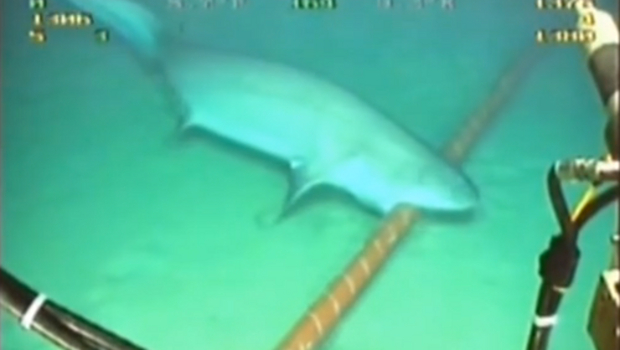Biologists, meanwhile, say sharks are known to bite submarine cables. How much damage they can cause depends on the species and the cable itself.
“Underwater cables are sometimes bitten and damaged by sharks,” Kazuhiro Nakaya, a marine scientist and professor emeritus at Hokkaido University, said via e-mail. “Although 8,000m below the sea level is a little too deep for sharks (the deepest shark record is less than 5,000m), it is possible that the cables settled in shallower areas are damaged by sharks.”
Sharks are attracted by electromagnetic fields they can pick up through sensing organs called electroreceptors, which are located in their snouts and heads.
“They cruise along the bottom trying to detect bioelectric fields from prey living on the bottom and also looking for the light flashes of bioluminescent prey,” Dean Grubbs, an associate scholar scientist at Florida State University Coastal and Marine Laboratory, said via e-mail. He was referring to the bluntnose sixgill, which he said is the shark in the 2010 video on YouTube.
“Though their jaws are relatively weak, they have saw blade-shaped teeth and tend to bite large food items (including carrion like dead whales) and then twist their large body until they saw out a hunk of flesh. It is possible that a large shark feeding in this way could damage submarine cables.”
Grubbs said he has seen experiments showing sharks orienting to a weak electromagnetic field emanating from an electrode. A transatlantic cable laid in the 1980s by AT&T was found to have been damaged several times by undersea attackers, primarily crocodile sharks, Grubbs said. He added, however, that “most deep-sea sharks have relatively weakly calcified jaws so their bite force is quite low.”
That, combined with better protection for cables than in the past, suggests human activity is what has been affecting the Internet in Vietnam. According to the management consortium’s Costin, anchoring and fishing were responsible for all the faults last year. It’s expected to be fully restored by 27 January.
IDG News Service








Subscribers 0
Fans 0
Followers 0
Followers